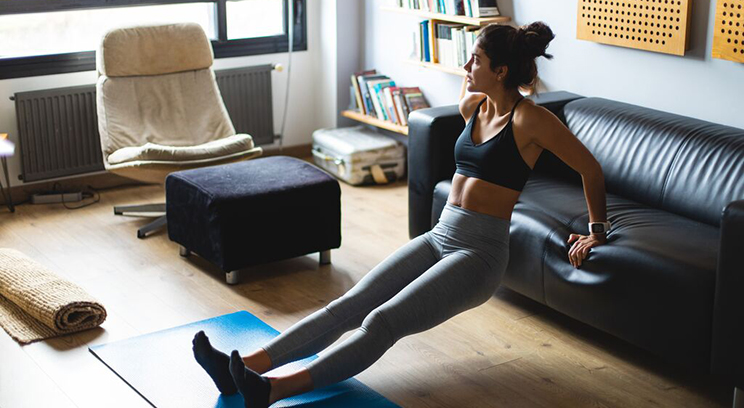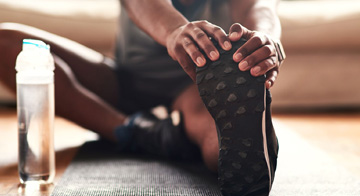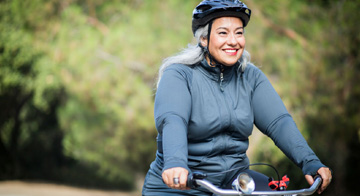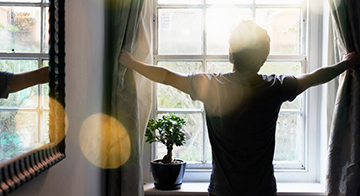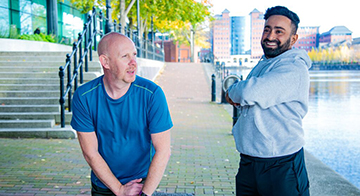Sedentary behaviour is defined as what we do when we’re awake which has a MET (metabolic equivalent task – a measure of how many calories we are burning) of 1.5 or less.
Activities with a MET of 1.5 or less including sitting at a desk, using a keyboard, sitting in a meeting, and commuting — so it’s easy to see how a typical working day involves a lot of sedentary behaviour. And this is often compounded in our downtime with time spent watching television, reading, and playing video games.
Bupa Wellbeing Index 2022
In today's modern world, many of us find ourselves leading sedentary lives, spending a significant amount of time sitting or being inactive. Whether it's sitting at a desk for long hours, commuting to work, or indulging in screen-based entertainment, our daily routines often lack the physical activity necessary for maintaining good health.
The COVID-19 pandemic exacerbated this issue, as remote work became more prevalent – and for many, working remotely, at least part of the time, has become a permanent way of life. The absence of commuting, walking between meetings, and engaging in physical activities during breaks significantly reduced overall movement in our lives. With blurred boundaries between work and personal life, finding the motivation and time to incorporate exercise into our daily routines can be challenging.
In this article, we look at what the risks of a sedentary lifestyle can be and provide practical tips on how to add more movement to your day – both at home and at work.
Understanding sedentary lifestyle: who is affected?
A sedentary lifestyle, marked by extended periods of sitting or inactivity, has become a prevalent issue affecting individuals across all age groups. Whether at home, work, or during travel, many people find themselves engaging in sedentary behaviours that can be damaging to their long-term health.
According to Dr Naveen Puri, Medical Director Bupa UKI, it is important to recognise the factors that have contributed to the rise of sedentary behaviour. He says: “The modern way of life, with its sedentary jobs, screen time, and lack of physical activity, has made all age groups more sedentary than ever before. And, with the increasing accessibility of technology and the convenience it offers, we find ourselves spending more time sitting and engaging in activities that require minimal physical effort.
Taking under 5,000 steps per day is considered sedentary
Understanding the health and wellbeing risks of a sedentary lifestyle
Studies have established a strong link between prolonged sitting and the development of various chronic health conditions.1 It is crucial to understand these risks to motivate ourselves to incorporate more movement into our daily routines.
Dr Naveen: “Research has consistently shown that prolonged periods of sitting are associated with an increased risk of cardiovascular disease. Sitting for extended periods can lead to poor blood circulation and reduced heart health2. Additionally, sedentary behaviour has been identified as a contributing factor to obesity. When we sit for long hours, our energy expenditure decreases, and our metabolism slows down, making weight gain more likely.”
‘Sedentary lifestyles are now a public health emergency, with the World Health Organisation warning that physical inactivity is the fourth leading risk factor in deaths globally.’
Bupa Wellbeing Index 2022
Type 2 diabetes is another condition that is closely associated with sedentary behaviour. Studies have found that excessive sitting can impair glucose metabolism and insulin sensitivity, increasing the risk of developing diabetes3. Moreover, musculoskeletal issues, such as back pain, neck strain, and weakened muscles, are commonly experienced by individuals with sedentary lifestyles. Lack of movement and poor posture can lead to muscle imbalances and structural problems, causing discomfort and reduced mobility.
Dr Naveen confirms: "It can be easy to shift into sedentary behaviour and neglect the importance of physical activity. By understanding the potential risks to our health and wellbeing, we can increase our motivation to make positive changes by incorporating more movement into our daily lives."
Practical tips for a less sedentary lifestyle
Breaking up prolonged periods of sitting and incorporating regular physical activity is important to mitigate the health risks associated with a sedentary lifestyle. Small, positive changes such as taking regular standing or walking breaks, stretching throughout the day, or engaging in light exercises can deliver benefits.
Dr Naveen shares the following ideas to incorporate movement into your day:
- Plan ahead: Schedule regular breaks and set reminders to move throughout the day. Even if you have a busy schedule, taking a few minutes to walk around, stretch, or perform simple exercises can break up prolonged sitting and provide physical and mental refreshment. Every little bit of movement counts!
- Create an active work environment: Transform your workspace into a more active environment. Consider using a standing desk, which allows you to alternate between sitting and standing positions throughout the day. Take active breaks by walking around the office, doing quick exercises, or stretching. If possible, suggest walking meetings to encourage movement and stimulate creativity among colleagues.
- Embrace active commuting: If you have the opportunity, choose active transportation options for your daily commute. Walking or cycling to work can be an excellent way to incorporate physical activity into your day, reduce sedentary time, and enjoy the benefits of fresh air and natural movement. If distance is a concern, consider parking your car farther away from your destination and walking the remaining distance, or get off the train/bus one or two stops before your destination.
- Find opportunities at home: Household tasks can involve movement, such as vacuuming, mopping, or gardening, providing additional opportunities for physical activity. Additionally, there are numerous online resources and workout routines specifically designed for small spaces or limited mobility. Consider seated exercises or chair yoga to keep your body active and mobile even when you can't move far.
- Make movement fun: Explore different physical activities and find ones that you genuinely enjoy. Dancing, swimming, hiking, or playing a sport are excellent ways to stay active and incorporate movement into your routine. The key is to find activities that bring you joy and make exercise a pleasurable experience. When you enjoy what you're doing, it becomes easier to maintain a less sedentary lifestyle.
- Small steps: Any change to routine takes time, and it’s important not to be over ambitious with your goals. Little and often is crucial in building up healthy habits – and any movement during your day will make a difference.
Whether it's through small adjustments in our work environment, active commuting, finding opportunities for movement at home, or engaging in enjoyable physical activities, every effort counts towards breaking the sedentary cycle.
Remember, it's important to consult with a healthcare professional before starting any exercise program, especially if you have existing health conditions or mobility limitations. They can provide personalised guidance and recommend exercises that are safe and suitable for your situation.
